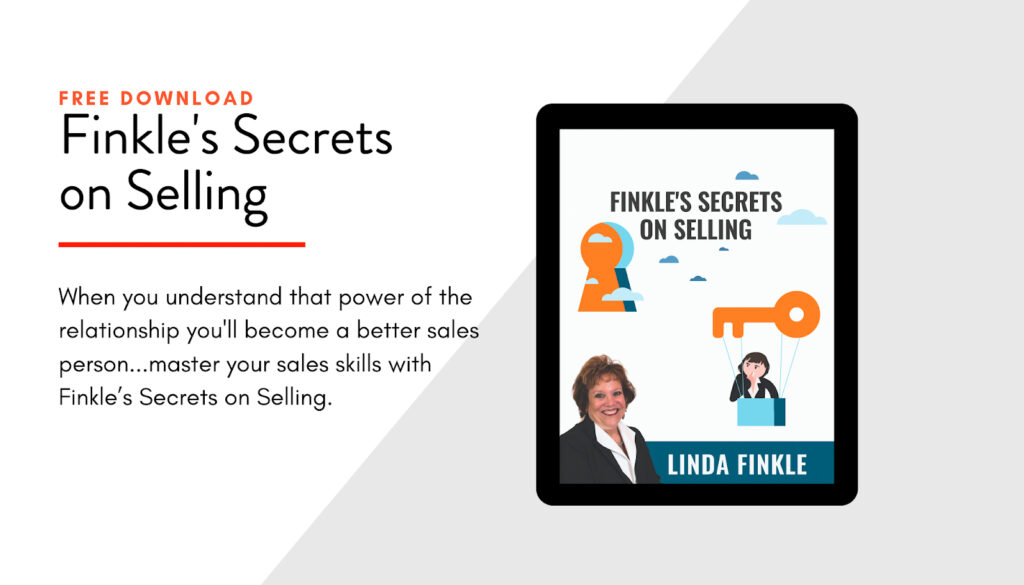Closed deals are important, let’s not pretend otherwise. However, sales activity starts the process, and you can’t close deals without the activity.
I know this sounds simplistic and I can’t tell you how often I have this conversation with clients and they are almost surprised by that notion.
Frankly, I’m surprised they are surprised! How do they think deals get into the pipeline? What I have learned, though, is that it isn’t that they don’t believe they have to do some sales activity, the operative word is some.
Individuals who refer to themselves as a salesperson understand that to keep the pipeline full you have to create sales activity, if not daily, at least weekly.
The specific sales activities are unique to them and their industry, but no one, regardless of how long you have been in sales or how talented you are, can close sales without having conversations with prospects. How you get to those conversations may be different, but you have to interact with another person to begin the sales cycle.
Even if your sales are exclusively Internet-based, you have to be working on creating a brand, identifying where to promote and advertise your products, and more. Those activities are conversations, even if they aren’t with the end-user.
Now, those who need to sell for a living but whose primary function isn’t sales don’t understand what it means to keep the pipeline full, and often don’t recognize they actually have to sell to do the work they are trained to do.
This includes all professional services and sometimes even those selling exclusively through the Internet. It is not true that if you build it they will come. Yes, they may come eventually, but don’t fool yourself into think because you are an attorney, doctor, financial advisor, consultant, etc., that your shingle hanging out is enough.
What is sales activity and how do you measure its success?
My definition of sales activity is any action you take to initiate conversations with prospects or move the sales conversation to the next step with existing prospects.
These can include obvious ones such as telephone calls, email exchanges, meetings, sending a proposal, or possibly setting up an initial meeting.
The frequency of these activities depends on the length of the sales cycle, your prospect to closing rate, the purpose of the calls or email exchanges, and a number of other factors. Other sales activities can include: asking clients or prospects for referrals, finding and connecting with COI (centers of influence), connections you make on LinkedIn and other social media channels, speaking at meetings where your prospects attend, and writing articles or newsletters…these are just a few ideas.
Sales activity has to include a variety of activities to get and keep your name and face in front of those who can buy from you.
I admit it, I’m a numbers girl. When I train salespeople I focus on numbers because they are chock full of information. There is an adage that says, “Know the score, report the score, the score gets better” and this is particularly true with measuring sales activity. What might you measure? Your closing rate is critical. If you have to meet with ten people or send 15 proposals to close a deal it tells you what you need to know.
To close one deal a month you have to have those ten meetings, period. Below are some examples of other numbers you might want to track and know.
• Typical life cycle of your sales process
• Average dollar sale
• What percentage of your business is referrals
• How many interactions does it take to set up a meeting
Knowing the numbers helps you determine exactly what you need to do to close deals.
Yes, you can get lucky sometimes and a customer calls you and is ready to buy…no selling required. Hopefully the longer you are in business the more frequently this occurs.
But today, right now, until that happens you have to focus on sales activity to fill the pipeline with prospects and people at various stages of the sales cycle.
Very few people buy during the first conversation and you’ll lose many during the sales process. You’ll have people who change their minds, cancel meetings, don’t return phone calls or emails, and every other possibility. It’s why you have to determine what specific sales activities you need to do day in and day out, week in and week out, what makes sense for you and your industry and that all has to include tracking the numbers.
One mistake I have observed with most companies I train is they don’t track numbers.
Sometimes they haven’t figured out what they should be tracking and often it’s an action they ignore as they haven’t seen the value. How can you get better without knowing the numbers and the results?
What do you use to determine the effectiveness of your activities if you aren’t measuring?
Whether you are new to sales, a seasoned sales professional, or need to have clients or customers show up so you can do what you want to do, it can’t happen without sales activity.
Take the time to understand what activities work for you, what doesn’t, and what you need to do differently. Determine the frequency of these activities and then put together a plan to implement it and handle them routinely.
Without a plan, it won’t happen.
Unless you know what sales activities to engage in, you won’t do them. Until you track and measure results, nothing improves and without the sales activities, you will not close sales.
Want More Selling Tips?
I have created a list of my top tips that I have personally used over and over again to become a top salesperson.







